Of the many interior design styles, are you struggling to determine yours? You’re certainly not alone. It turns out, “what is my design style?” is one of the top google searches relating to interior design. Here, you’ll find a comprehensive list of the most popular design styles – and discover your own!
From modern to traditional, to lesser-known styles like boho or glam, there are plenty of popular interior design styles to choose from. To give you a full understanding of their fundamental design principles, we’ve provided the most common interior designs styles.
While this is by no means an exhaustive list, as design styles are constantly evolving, you’ll find one of them (or a combination of two) will certainly resonate with your taste.
So, let’s dive into the world of home decor styles and find out which one speaks to you most!
Modern
There is a big misconception about this design style being cold, stark and sterile. In reality, Modern design is all about simplifying things down to their most fundamentals elements and highlighting clean, crisp lines.
There are no unnecessary embellishments or ornate details. Rather, there’s a strong focus on minimalism and functionality, with a more neutral color palette being the norm.
At its core, modern design reflects simplicity and efficiency – it’s mostly the creation of uncluttered, practical and timeless spaces with a focus on form and function.
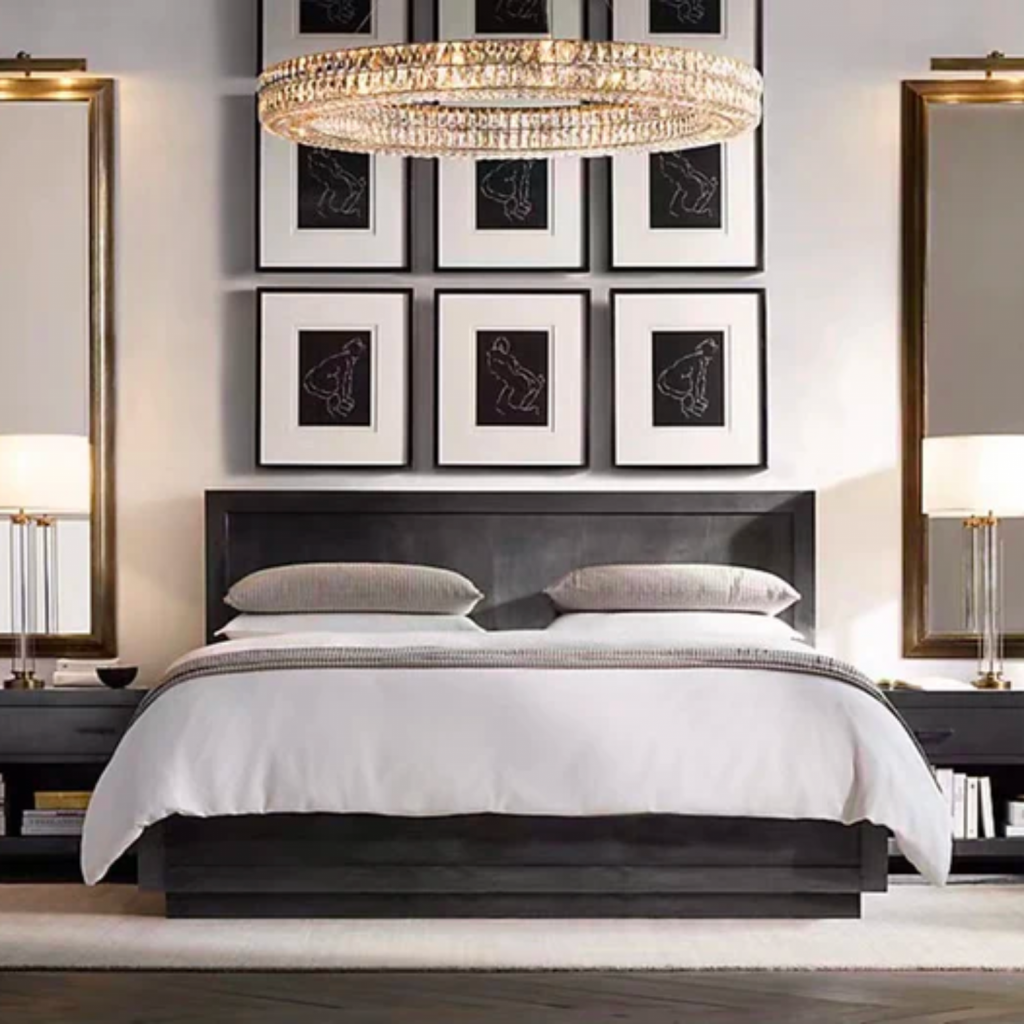
Traditional
The traditional design style is an enduring approach that has been in use for centuries. It is based on a deep respect for heritage and the use of classic shapes and forms.
In fact, many traditional pieces have remained unchanged for hundreds of years, which speaks to the enduring appeal of this design style.
At the heart of traditional design is a sense of conscious layering. Each element is carefully chosen and placed with a deliberate purpose, creating a sense of balance and harmony in the space.
Formality is also a key component of this style, with an emphasis on symmetry and structure that creates a sense of order and stability.
READ MORE >>> Interior Designer vs Decorator: Which One is Best Suited for Your Project?
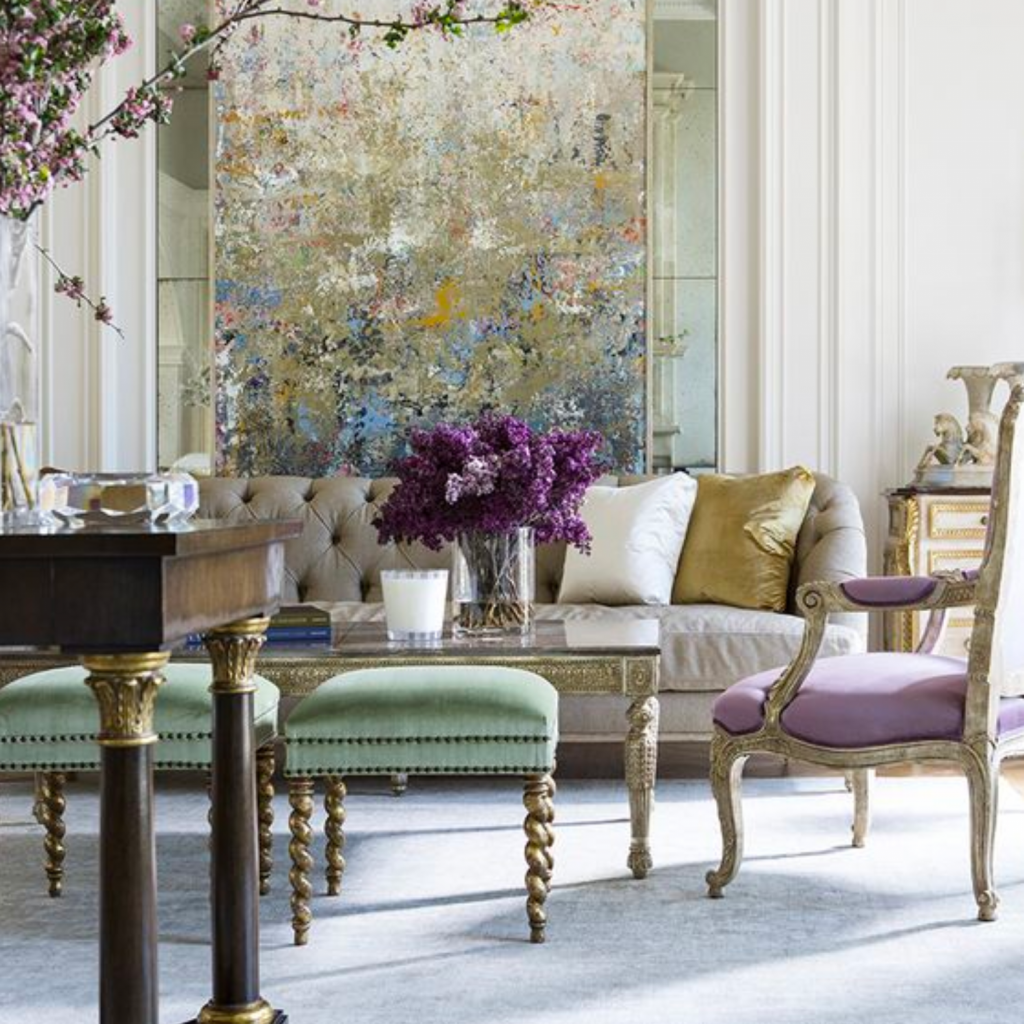
Transitional
Transitional design is a style that blends traditional and modern elements to create a unique look that bridges the gap between past and present. This style often features classic design elements like crown molding, wall paneling, or traditional rugs, paired with modern furniture, art, or lighting.
The goal of transitional design is to create a cohesive look that combines the best of both worlds. By blending classic and modern elements, this style offers a sense of comfort and familiarity, while also embracing the clean lines and simplicity of modern design.
Neutral color palettes are common in transitional design, with shades of beige, gray, and white being popular choices. Textures are also important, with a mix of materials like wood, metal, and glass used to add interest and depth to a space.
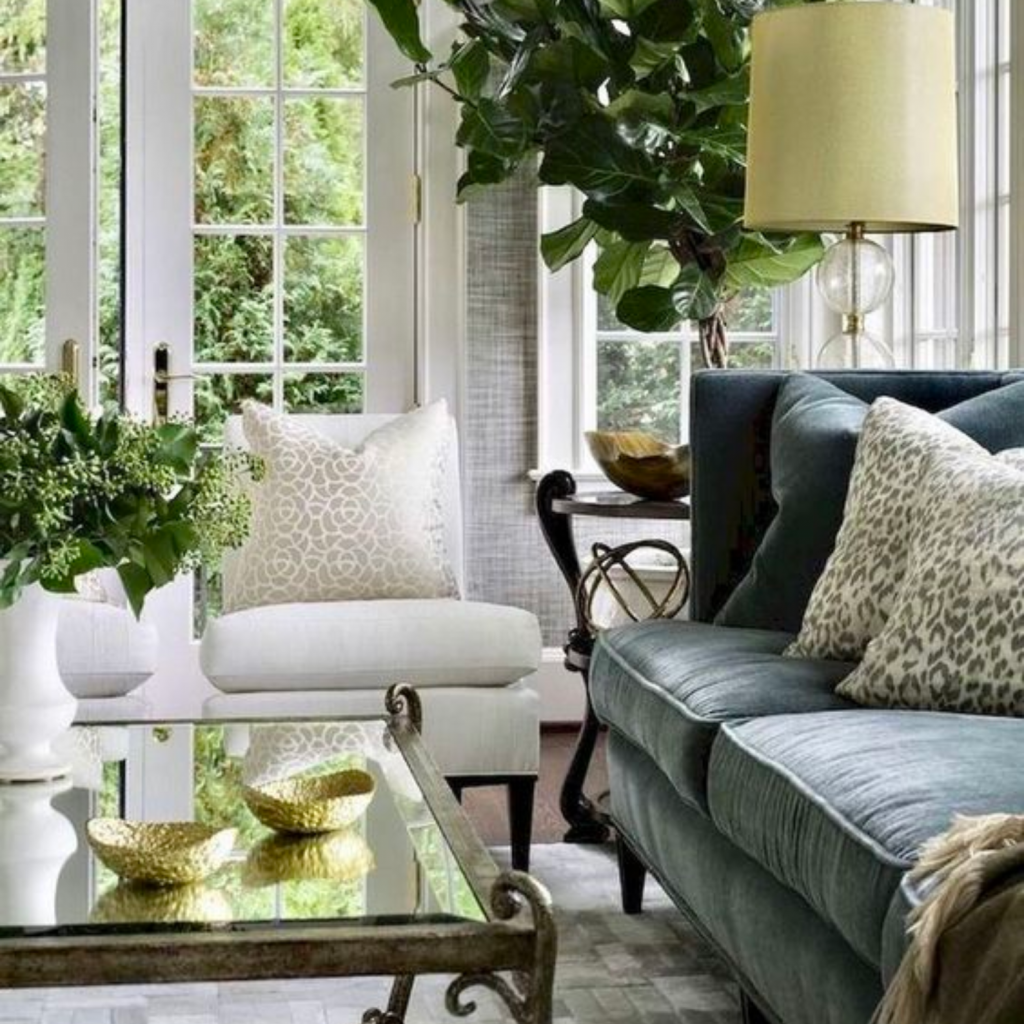
Furniture in this design style is often a mix of traditional and modern styles, with clean lines and simple shapes being favored. Comfortable seating is also a hallmark of this style, with sofas and chairs designed for lounging and relaxation.
Overall, thi is a versatile style that allows for a lot of flexibility and creativity. It’s perfect for those who appreciate the best of both traditional and modern design and want to create a space that feels timeless and welcoming.
Mid-Century Modern
This style has taken heavy inspiration taken from the 1950s and 1960s. The pieces designed during this period have truly stood the test of time, remaining fresh, modern, and relevant even today.
One of the defining characteristics of mid-century modern style is its clean and minimalistic lines. The furniture and decor from this period often feature simple and sleek designs with purposeful details and styling.
Warm woods such as teak, walnut, and oak were commonly used, and the furniture pieces were often elevated on thin and tapered legs, giving them a light and airy feel.
READ MORE >>> Interior Design and Mental Health: How Design Can Improve Your Wellness
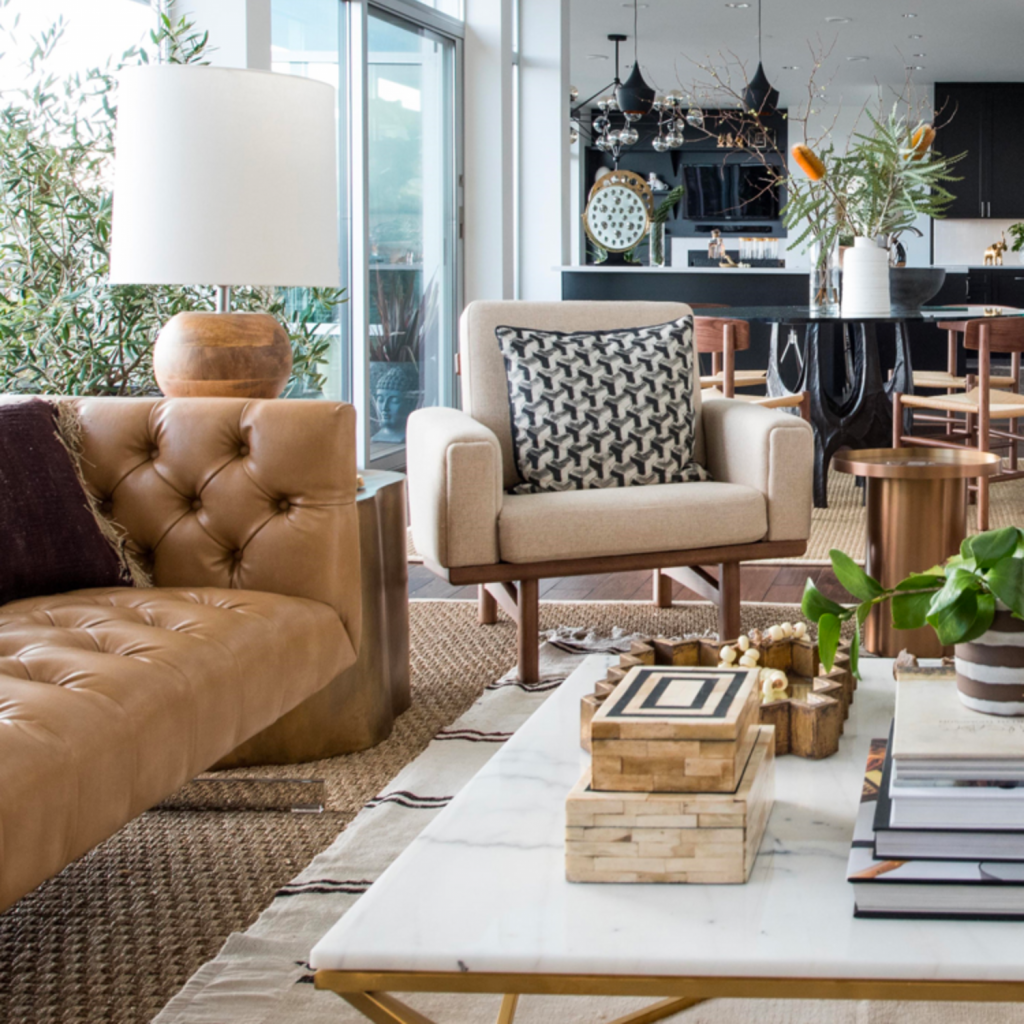
In addition to its sleek lines and warm woods, this style also incorporates bold and vibrant colors. Think deep oranges, mustard yellows, and rich greens. These colors are often used in combination with white, black, or neutral tones, creating a striking yet balanced color palette.
This style is perfect for those who appreciate sleek and minimalist design with a touch of retro charm. Its timeless appeal and iconic pieces have cemented it as a classic design style that will continue to inspire for years to come.
Glam
This style is all about incorporating the very best in materials, finishes, and textiles to create a lavish and high-end feel. The use of leather, suede, and velvet add a luxurious texture to the space while the rich jewel-toned colors create a regal ambiance.
What sets this style apart is the careful consideration of every design element to ensure it contributes to an overall polished look. Instead of relying on intricate detailing or embellishments, this style focuses on minimal yet impactful touches. The result is an effortlessly chic and sophisticated space that exudes a posh and elevated feel.
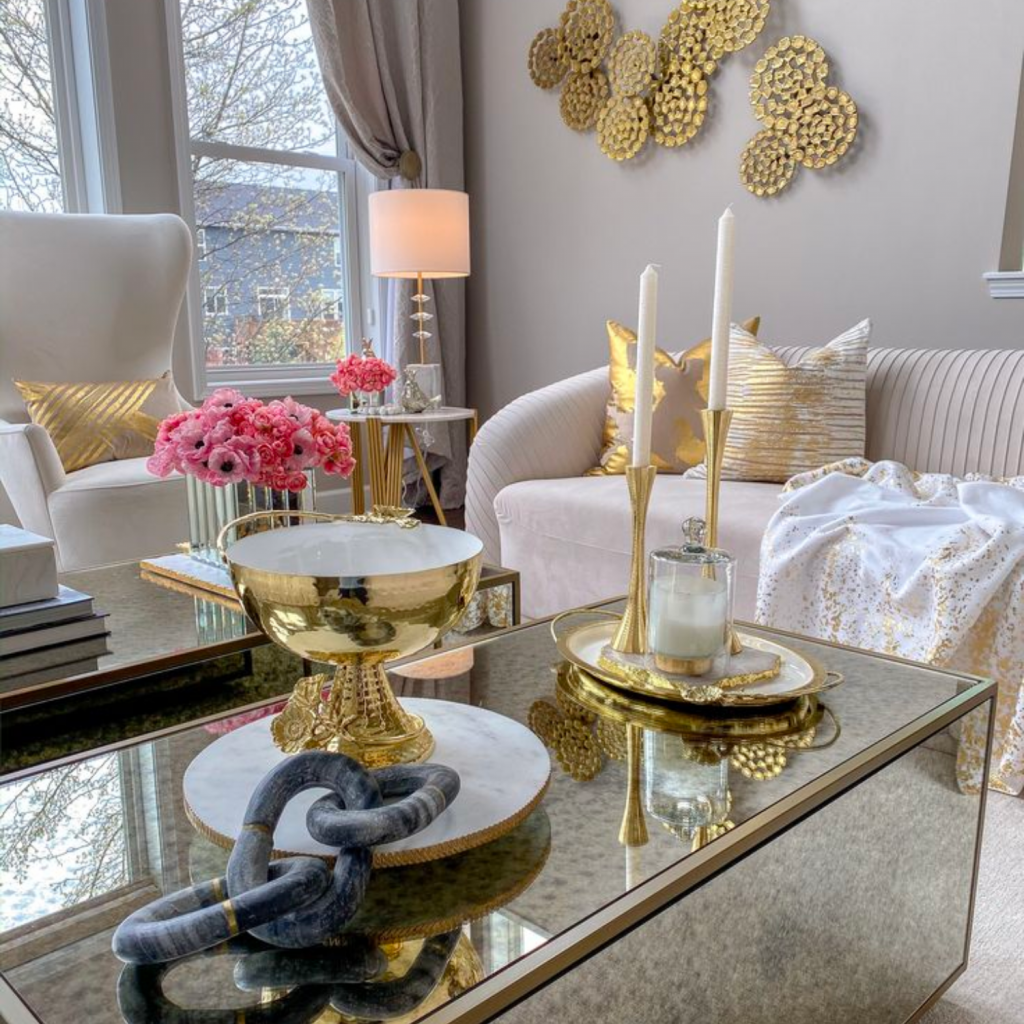
In contrast to the bold and vibrant Hollywood Regency style, this style tends to be more muted in color palette, but equally impactful. Neutral tones such as white, beige, and gray, are often used as a backdrop for the pops of jewel-toned colors, adding an element of sophistication to the space.
Overall, this style is perfect for those who appreciate the finer things in life and want to create a stylish and upscale living space. With its focus on quality materials and finishes, it’s sure to add a touch of glamour to any home.
Boho
Bohemian (AKA as Boho) style has been gaining popularity in recent years, but its roots actually date back much further. This style is all about creating a unique and eclectic look by combining natural and organic elements in a layered and collected way. The end result is a rich and textured aesthetic that exudes warmth and character.
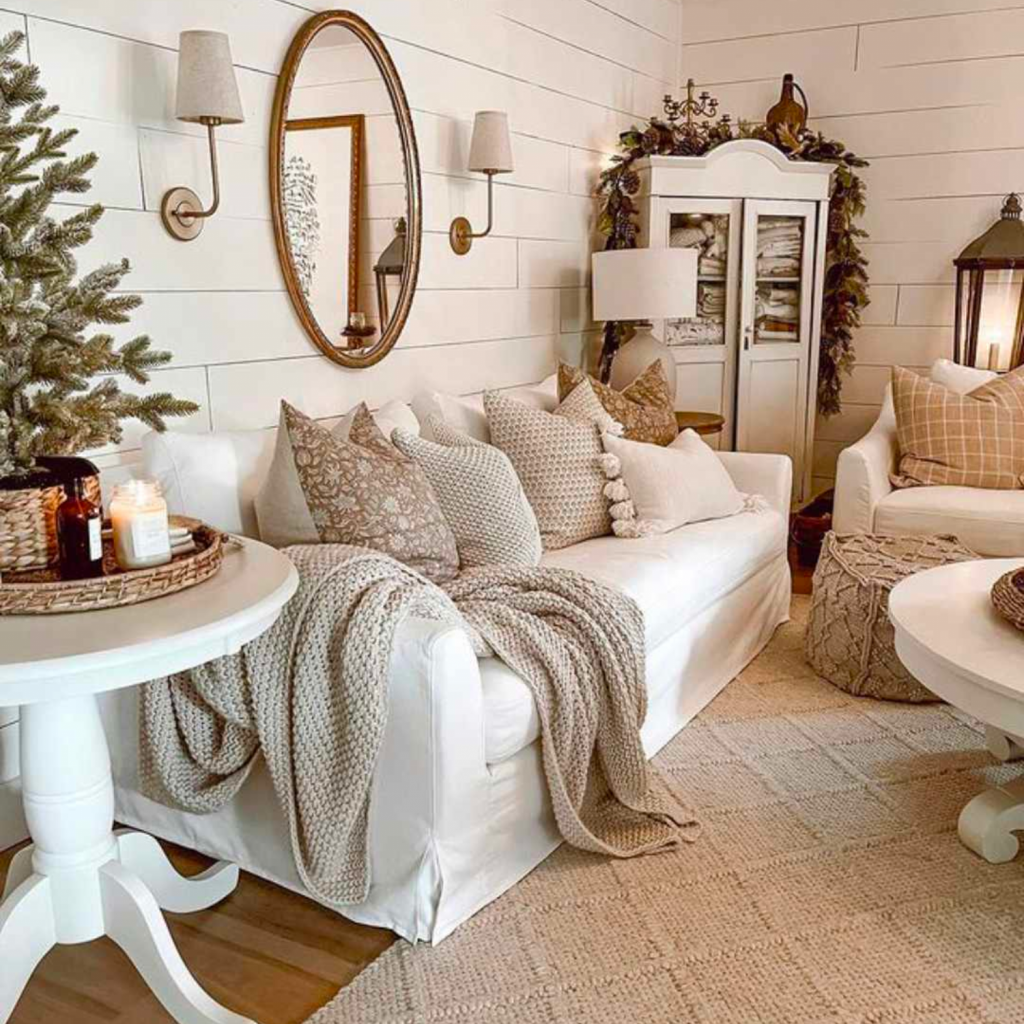
READ MORE >>> Studio McGee Design Style Secrets Revealed
The Boho style incorporates a variety of materials and textures, including cane, rattan, bamboo, and textiles, all blended together with bold and vivid colors. This creates a distinctive and exotic feel that is playful and inviting. With Boho, anything goes, so don’t be afraid to mix and match patterns, textures, and colors.
The key to mastering Bohemian style is to focus on creating a curated and personalized space. This style is all about expressing your individuality and creating a space that reflects your personality and tastes. Embrace the imperfect and let your creativity run wild as you layer and blend different elements to create a unique and eclectic space.
Scandinavian
Scandinavian design has its origins in the northern part of the world that shares its name. While it bears some resemblance to organic modern design, it tends to be simpler and more minimalistic in its approach.
Colors are used sparingly, and when they are, they are typically soft pastels balanced with light-toned woods, whites, creams, and tans. The result is an inviting, clean, and uncluttered style that is also warm and relaxed.
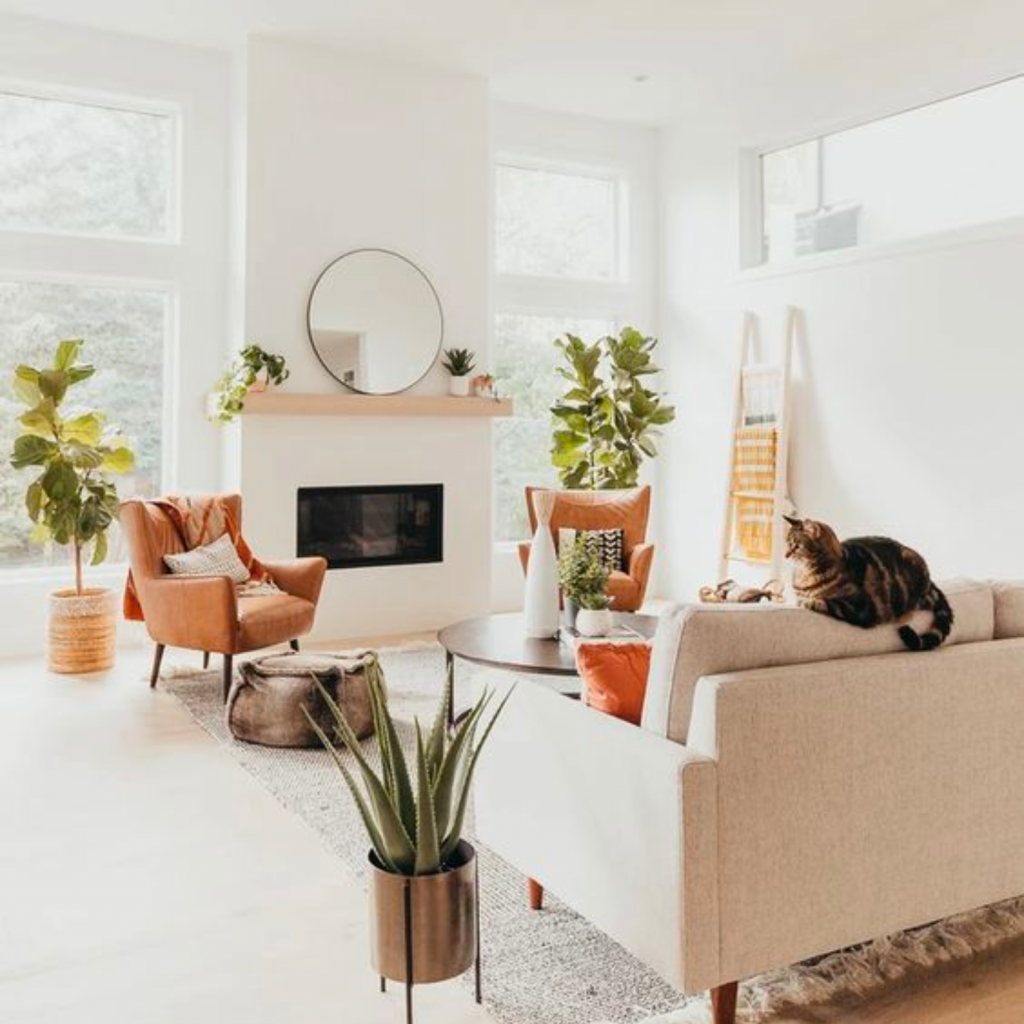
This aesthetic is characterized by its emphasis on functionality and practicality, as well as its use of natural materials such as wood, wool, and leather. Whether you are looking to create a cozy and welcoming living space or a serene and calming bedroom, this design style is an excellent choice that is sure to provide you with a comfortable and stylish environment.
Coastal
The name of this design style inherently conveys the relaxed and beachy atmosphere it embodies. Coastal style is all about incorporating the natural elements of the coast into your home decor.
One of the defining features of coastal style is the use of white-washed woods and a predominantly white color palette. This helps to create a bright and airy atmosphere, reminiscent of the beachy sunshine. Blue tones are also commonly used, evoking the calming and tranquil hues of the ocean.
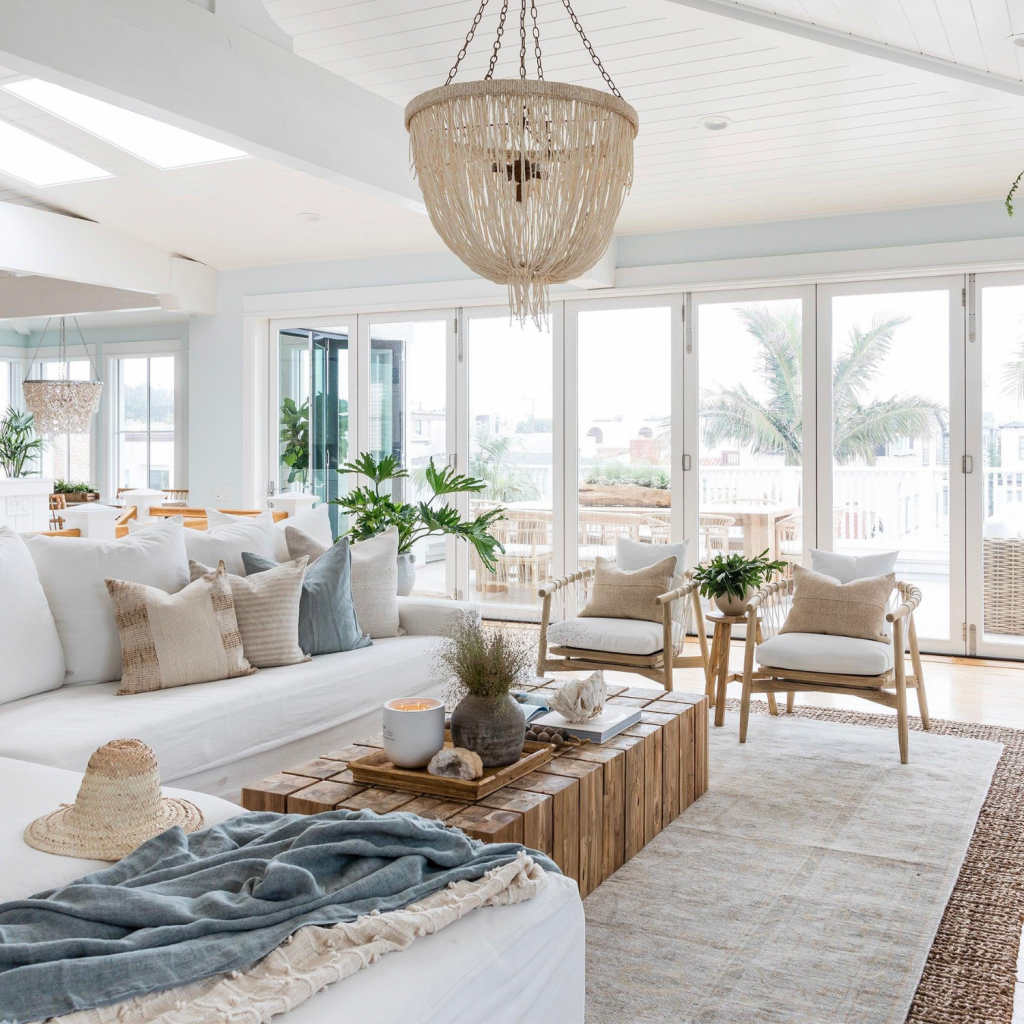
In addition to these basic elements, coastal style often incorporates natural textures like jute, seagrass, and rattan. These materials help to bring the outdoors inside and add to the relaxed and casual feel of the space.
Other common features of coastal style include nautical accents such as rope, anchor motifs, and sailboat decor. These elements serve as a subtle nod to the coastal lifestyle and add a touch of whimsy to the space.
Whether you live near the coast or not, incorporating coastal style elements into your home can help you create a peaceful and relaxing oasis that feels like a permanent vacation.
Minimalist
This design style has similar cues to modern and is characterized by clean lines, simple shapes, and a focus on functionality. This style emphasizes the importance of the phrase “less is more” and aims to create a sense of calm and simplicity in a space.
In a minimalist space, everything must serve a purpose, and there are typically very few extra objects or layers. The color palette is often neutral and subdued, with whites, grays, and blacks being common choices.
Natural materials such as wood, stone, and metal are also frequently used to create a sense of warmth and texture.
READ MORE >>> Patterns and Textures: Your Guide to Mixing Them Like a Pro
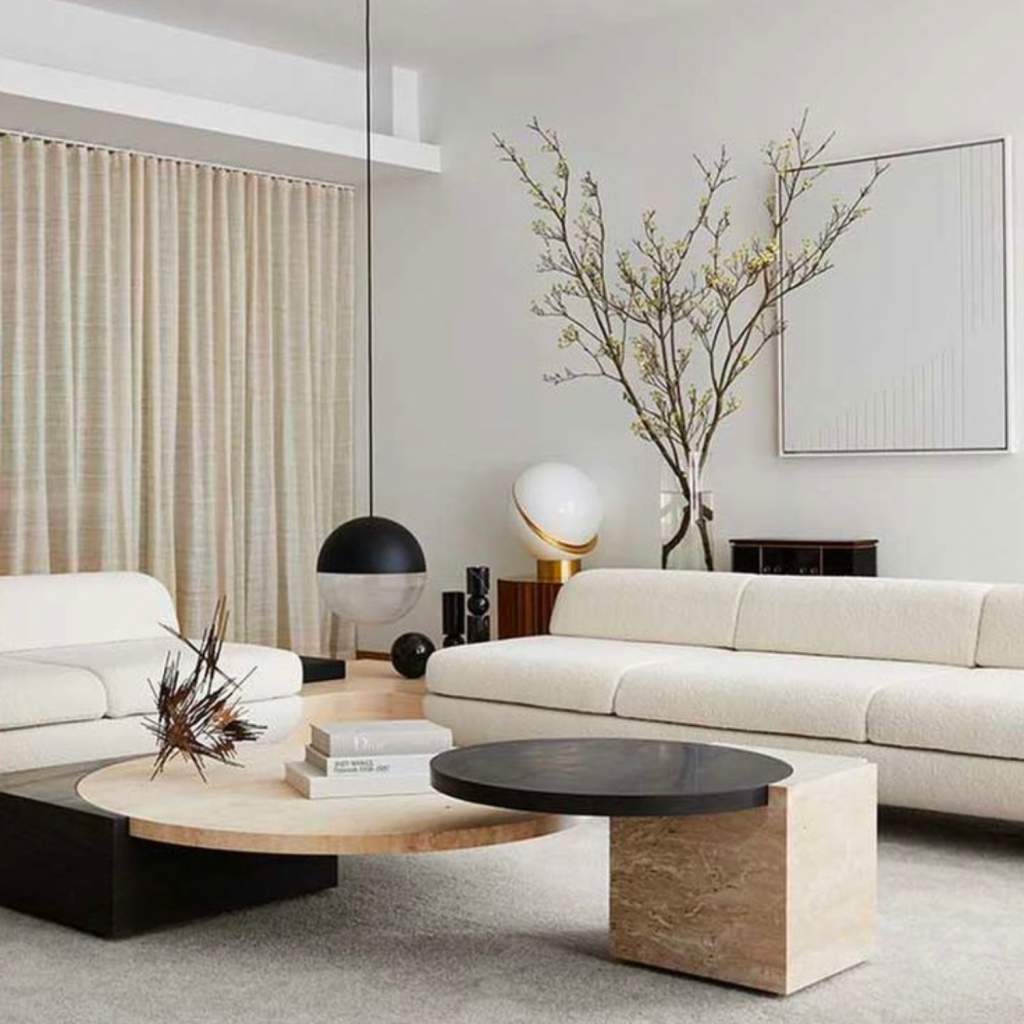
Furniture and decor in a minimalist space tend to be simple and unadorned, with clean lines and minimal detailing. Storage solutions are often incorporated into the design to maintain a clutter-free environment.
Lighting is also important in a minimalist space, with natural light being preferred and artificial light used sparingly to create a warm and inviting atmosphere.
This design style is perfect if you value simplicity, functionality, and a sense of calm in your living spaces. It encourages the use of high-quality materials and thoughtful design choices, and can create a truly serene and peaceful home.
Eclectic
This style can be considered as the refined and sophisticated version of Boho, sharing many similarities such as the eclectic nature, colorful combinations, and carefully curated aesthetics. However, this style is characterized by a more structured and intentional approach to design.
In an eclectic room, you can find iconic pieces from various styles that come together harmoniously when executed correctly. The focus is on creating a cohesive and balanced look, rather than relying solely on the organic and free-spirited feel of Boho.
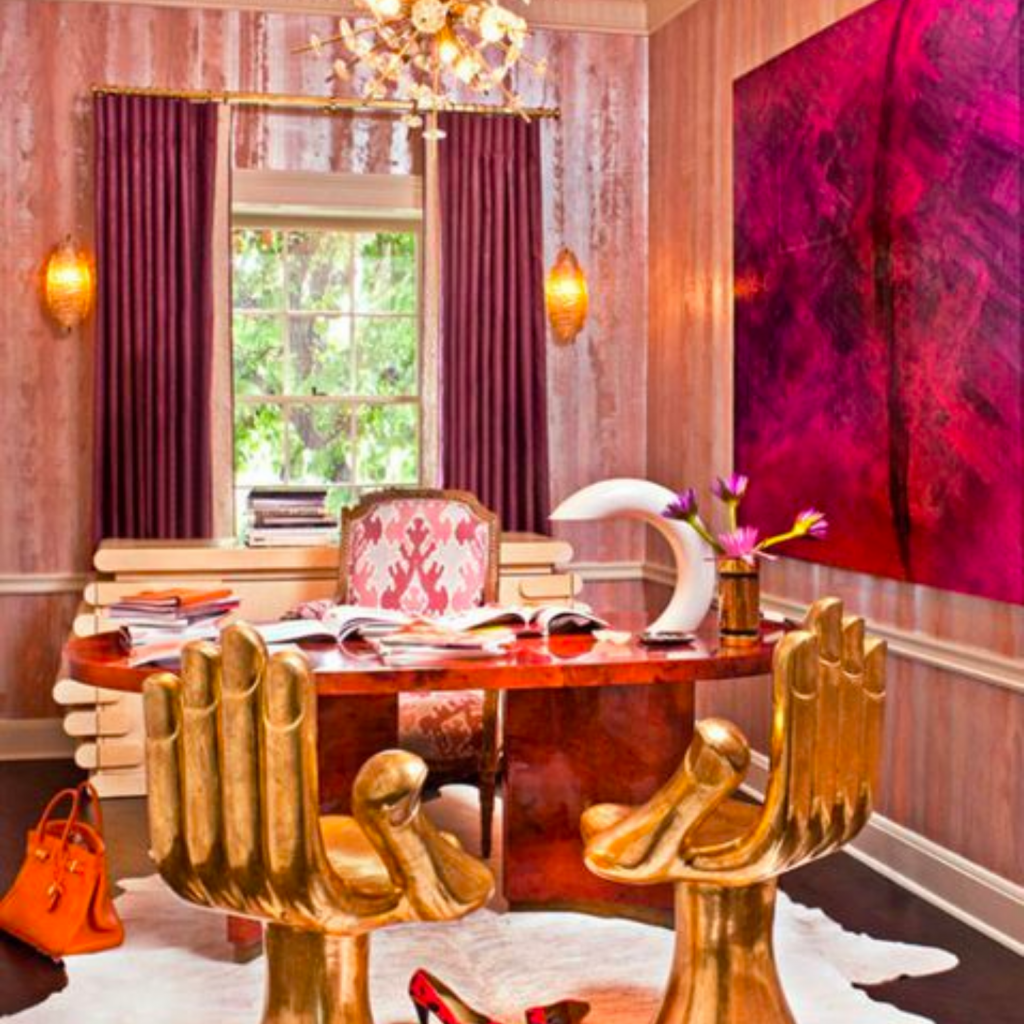
This style is perfect for those who appreciate the freedom and creativity of Boho but prefer a more polished and put-together aesthetic. It allows for a mix of different styles, textures, and colors while still maintaining a sense of sophistication and refinement.
Modern Farmhouse
In recent years, this particular style has experienced a surge in popularity, becoming a mainstream design choice for many. It features the use of found and salvaged objects, which are brought together in a modern and sophisticated manner.
Unlike its more rustic and farmhouse-inspired predecessor, this style takes inspiration from those elements while incorporating more refined touches.
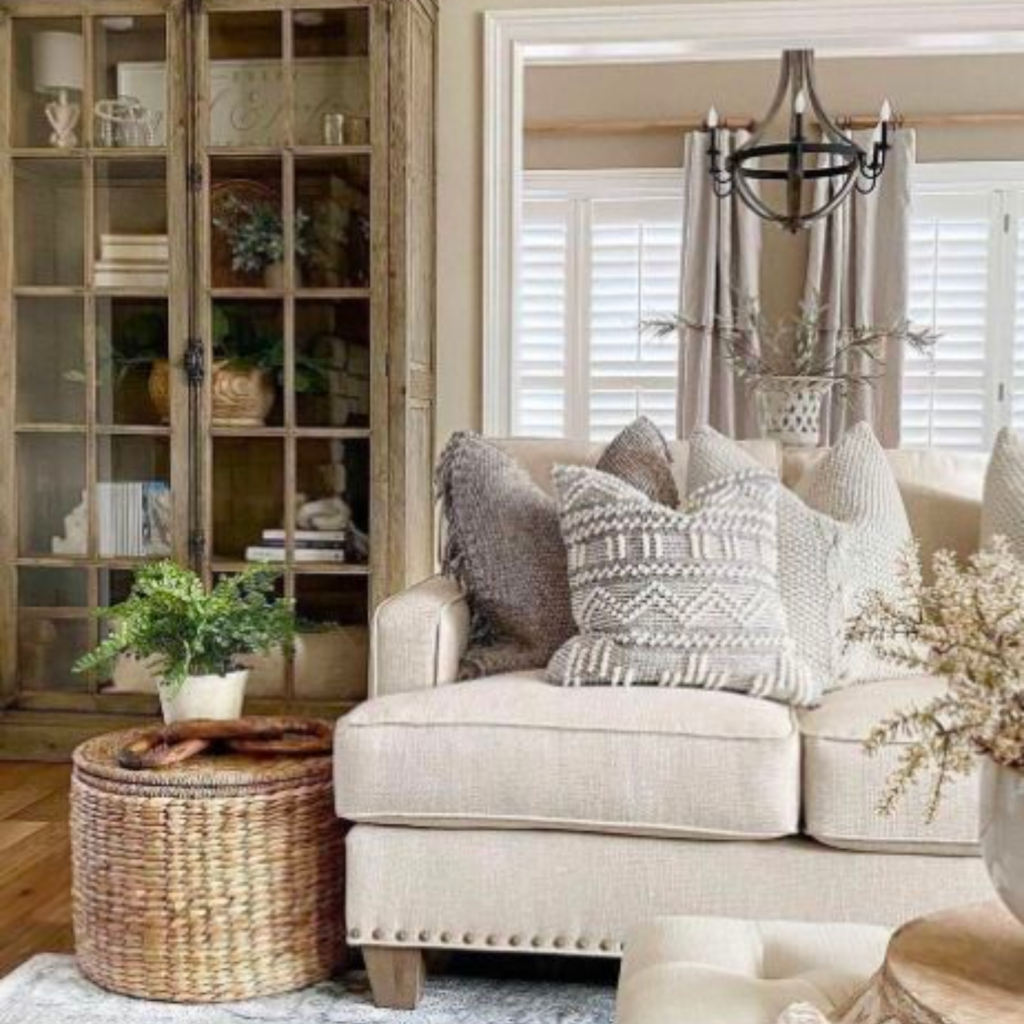
Expect to see a lot of plaids, blues, greens, white, and black hues in this style. It has a warm and inviting feel that is also comfortable to be in. It carries a slight traditional undertone without being too formal, striking a perfect balance between rustic charm and refined elegance. So, if you’re looking for a style that exudes a rustic yet sophisticated vibe, this might be the perfect choice for you.
Farmhouse
Country style is a more traditional and classic take on the farmhouse look, as opposed to the modern farmhouse style. It is rooted in simple materials that have been used for decades, such as rustic wood, plaid, gingham, and stripes. Simple spindle back furniture is also commonly seen in this style.
In addition to these basic elements, vintage signage, barn lighting, and reclaimed wood can also be incorporated into country interiors. These elements add to the rustic charm of the space, creating a cozy and inviting ambiance.
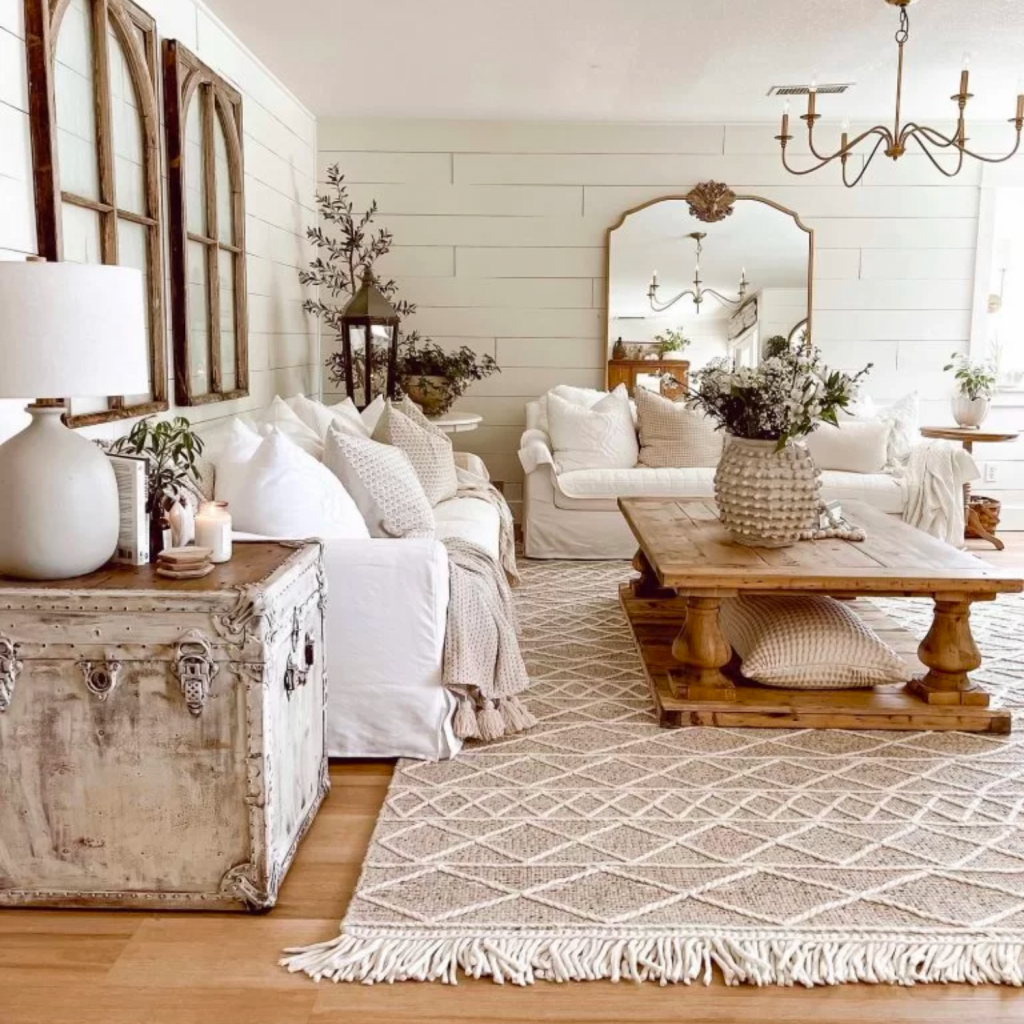
The overall look of country style is characterized by a focus on practicality and functionality, with an emphasis on natural materials and warm colors. This style is perfect for those who appreciate the simple things in life and want to create a warm and welcoming home.
It’s a timeless style that has been used for decades and continues to be a popular choice for homeowners looking to create a cozy and inviting atmosphere.



